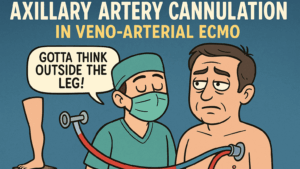Cardiac surgery often requires the use of cardiopulmonary bypass (CPB), which introduces the risk of hemodilution due to the use of non-blood priming fluids. Managing the residual blood volume post-CPB is crucial to minimizing the need for allogeneic red blood cell (RBC) transfusions, which are associated with increased morbidity, longer hospital stays, and higher mortality rates. This study by Baeza et al. explores various methods of post-CPB blood processing and their impact on transfusion rates in adult cardiac surgery patients.
Using data from the SpecialtyCare Operative Procedural rEgistry (SCOPE), the study analyzed 77,591 cardiac surgeries performed between January 2017 and September 2022. Five different blood processing techniques were evaluated:
- Cell Washing (CW) – Used in 81.9% of cases, involving centrifugation and filtration of salvaged blood.
- Ultrafiltration (UF) – A technique that removes excess plasma water to concentrate blood components.
- Whole Blood (WB) Reinfusion – Direct reinfusion of unprocessed CPB residual blood.
- Hemobag (HB) Processing – Off-line modified ultrafiltration to concentrate blood components.
- No Processing (NO) – Discarding of post-CPB blood without reinfusion.
The study’s primary outcome was the likelihood of intraoperative post-CPB RBC transfusion, with hematocrit (HCT) changes as a secondary measure. The Bayesian mixed-effects logistic regression model controlled for multiple variables, including patient demographics, operative variables, and transfusion practices.
Key Findings:
- Hemobag (HB) had the lowest transfusion risk, with only a 0.79% predicted probability of needing an RBC transfusion.
- No Processing (NO) had the highest transfusion risk, with a 2.12% probability, 1.41 times greater than CW.
- Patients who underwent HB and UF processing had the highest HCT increases post-CPB, indicating better preservation of red cell mass.
- CW, while widely used, resulted in a higher likelihood of RBC transfusion compared to HB.
- UF was effective in increasing HCT but did not significantly reduce transfusion rates.
- WB reinfusion was similar to CW in transfusion risk, but unlike CW, it retained coagulation factors and platelets.
The study underscores the need for comprehensive blood management strategies in cardiac surgery. HB and UF methods showed significant advantages in preserving blood components and minimizing transfusion needs, while the practice of discarding CPB blood led to the highest transfusion rates. These findings suggest that improving post-CPB blood processing techniques could enhance patient outcomes and reduce reliance on blood transfusions.
Study Ranking:
4/5 – High-quality observational study with strong data analysis but lacking randomized controlled trials.







